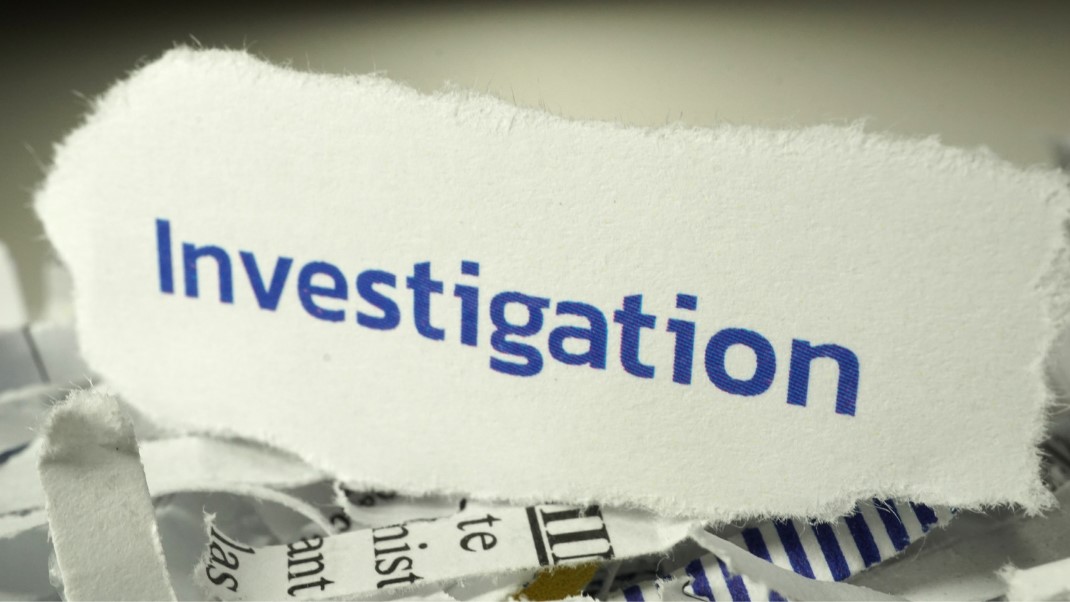The Bounce Back Loan Scheme (BBLS) was introduced by the government in April 2020 to provide quick access to finance for small businesses affected by the pandemic. However, the scheme has faced controversy due to basic fraud checks being disregarded, leading to fraud, defaults, and errors. HMRC is now conducting investigations to identify businesses that knowingly abused the BBLS. Repercussions for directors found guilty of fraud include bankruptcy restrictions and director disqualification undertakings. Nearly half of the loans taken out are expected to not be repaid, leaving the taxpayer to cover the losses.
Bounce Back Loan Investigation Process
Bounce back loan investigations have become increasingly prevalent as the HMRC intensifies efforts to combat fraud within the BBLS. The scheme, introduced by the government to provide rapid financial assistance to small businesses impacted by the pandemic, has unfortunately been exploited by some individuals and companies. As a result, HMRC is now taking action to hold those responsible accountable for their actions.
Fraudulent activities that can trigger a bounce back loan investigation include using funds for personal use, transferring money to unauthorized parties, exaggerating turnover to obtain larger loans, and dissolving the business to evade repayment. These actions violate the guidelines set forth by the BBLS and can lead to severe consequences for those involved.
Ensuring compliance with the eligibility criteria of the BBLS is essential to avoid potential investigations. Businesses must meet specific requirements, including deriving more than 50% of their income from trading activity and demonstrating adverse effects caused by the pandemic. Meeting these criteria helps maintain transparency and integrity within the scheme, safeguarding against unnecessary investigations and potential fraud allegations.
For businesses involved in a bounce back loan investigation, it is important to cooperate fully with HMRC and provide all requested documentation and information. This includes bank statements, business accounts, and records relating to the loan application process. By being proactive and cooperative, businesses can help expedite the investigation process, potentially mitigating any adverse outcomes.
Key Factors that Trigger a Bounce Back Loan Investigation
- Using funds for personal expenses
- Transferring money to unauthorized parties
- Exaggerating turnover to secure larger loans
- Dissolving the business to evade repayment
By avoiding these actions and ensuring compliance with the BBLS guidelines, businesses can minimize the risk of attracting the attention of HMRC and undergoing time-consuming and potentially damaging investigations.
Next, we will explore how businesses can prepare for an HMRC bounce back loan investigation, including the necessary documentation and important steps to take.
| Consequences of Bounce Back Loan Fraud: | Penalties: |
|---|---|
| Fines | Imprisonment |
| Compensation and confiscation orders | Director’s disqualification |
| Serious Crime Prevention Orders (SCPO) |
Preparation for HMRC Bounce Back Loan Investigation
If a business is under investigation for bounce back loan fraud, it may still be eligible to receive a loan, but the investigation may delay the approval process. To prepare for an HMRC investigation, it is essential to gather all relevant financial documentation, including bank statements, business accounts, and tax records. Consulting with legal advisors experienced in bounce back loan investigations can provide guidance on how to navigate the process successfully. Being proactive and cooperative during the investigation can help reduce potential penalties and fines.
When preparing for an HMRC bounce back loan investigation, it’s crucial to gather and organize all necessary financial documents. This includes:
- Bank statements: Provide thorough records of all business transactions, including deposits, withdrawals, and transfers.
- Business accounts: Compile profit and loss statements, balance sheets, and cash flow statements to demonstrate the financial health and activity of the business.
- Tax records: Collect all relevant tax documents, such as tax returns, VAT records, and PAYE records.
Having a comprehensive collection of these documents will help present a clear and accurate representation of the business’s financial situation during the investigation.
It is highly recommended to seek professional advice from legal advisors experienced in bounce back loan investigations. They can guide businesses through the investigation process, ensuring compliance with relevant laws and regulations. Additionally, legal advisors can provide insights into potential pitfalls to avoid and strategies for minimizing penalties and fines.
During the investigation, it’s important to be proactive and cooperative with the HMRC. This includes promptly responding to requests for information and providing any additional documents that may be required. Demonstrating cooperation and transparency can help build trust with the investigators and potentially lead to more favorable outcomes.

Summary of Preparation Steps:
- Gather bank statements, business accounts, and tax records.
- Consult with legal advisors experienced in bounce back loan investigations.
- Be proactive and cooperative during the investigation.
By following these preparation steps, businesses can navigate the HMRC bounce back loan investigation process more effectively and increase their chances of a favorable outcome.
Consequences of Bounce Back Loan Fraud
When individuals engage in bounce back loan fraud, they expose themselves to severe consequences. The repercussions for such fraudulent activities can include fines, imprisonment, compensation and confiscation orders, director’s disqualification, and Serious Crime Prevention Orders (SCPO). These consequences are implemented to deter fraudulent behavior and protect the integrity of the Bounce Back Loan Scheme (BBLS).
Bounce back loans will certainly be subjected to investigation to identify cases of fraud. Every effort is being made to uncover and penalize those who have exploited the scheme. The investigations aim to ensure that the funds allocated to support struggling businesses during the pandemic are used appropriately and efficiently.
For businesses facing financial difficulties, it’s important to note that bounce back loans cannot be simply written off. Repayment obligations remain in place, even in cases where fraud has occurred. However, it’s worth emphasizing that depending on the specific circumstances, arrangements may be made to adjust the repayment terms. These adjustments can help ease the financial burden while ensuring that businesses are still held accountable for their loans.

Can I Get My Bounce Back Loan Written Off?
In most cases, bounce back loans cannot be written off completely. The responsibility to repay the loan remains unless specific circumstances warrant a change in the repayment terms. It’s essential for businesses to communicate their financial difficulties and explore potential solutions with the relevant authorities or lenders.
Seeking professional advice from financial advisors or legal experts experienced in bounce back loan cases can provide valuable guidance and support. They can help businesses navigate the complexities of repayment and explore options for restructuring or adjusting the loan terms based on individual circumstances.
In summary, while bounce back loan fraud leads to serious consequences, repayment obligations for legitimate borrowers still apply. Adjustments may be possible, but businesses must engage with the appropriate channels to discuss their unique situations and explore potential solutions.
Conclusion
The HMRC bounce back loan investigation taskforce has been established to address the significant occurrence of bounce back loan fraud in the BBLS scheme. This investigation aims to identify and penalize those involved in fraudulent activities, which have resulted in substantial losses for the government. Ongoing investigations seek to recover funds and hold accountable both businesses and individuals responsible for this fraud.
It is crucial for businesses to understand the severe consequences of engaging in bounce back loan fraud. Compliance with the eligibility criteria of the BBLS is essential to avoid becoming the subject of an investigation. Seeking legal advice and proactively preparing for investigations can help protect businesses and directors from penalties.
The existence of the HMRC bounce back loan investigation taskforce highlights the importance of accountability and compliance in government support schemes. Investors and the public alike recognize the need for a fair and transparent process to ensure the funds allocated for economic relief reach the intended recipients. By addressing bounce back loan fraud, the government aims to maintain the integrity of future financial support programs and protect taxpayers’ money.
FAQs
What can trigger a bounce back loan investigation?
Fraudulent activities such as using funds for personal use, transferring money to unauthorized parties, exaggerating turnover to obtain larger loans, and dissolving the business to avoid repayment can trigger a bounce back loan investigation.
Can I still get a bounce back loan if I am under investigation?
Yes, you may still be eligible to receive a bounce back loan, but the investigation may delay the approval process.
Will bounce back loans be investigated for fraud?
Yes, bounce back loans will be investigated to identify fraudulent activities and recover funds.
Why is there an HMRC bounce back loan investigation taskforce?
The taskforce was established to tackle fraudulent activities related to the Bounce Back Loan Scheme and recover funds.
What bounce back loan fraud has occurred?
Fraudulent activities include businesses using funds for personal use, transferring money to unauthorized parties, and dissolving the business to avoid repayment.





